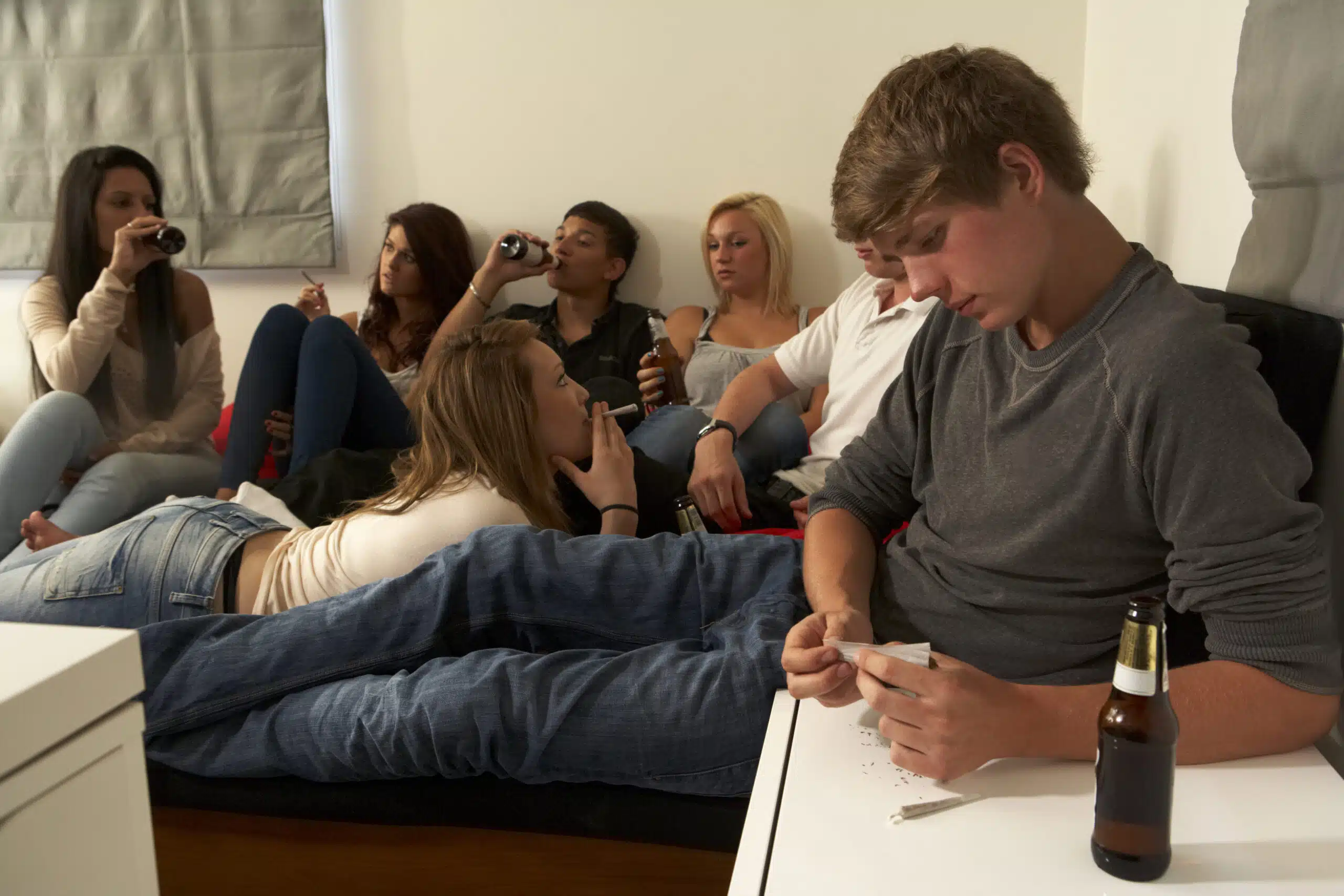
5 Important Things You Need to Look for in a Teen Residential Facility
Lila, 15, was found in her bathroom, on the floor, with vomit all over her shirt. The smell of booze and puke permeated the air. Lila’s mom was at her wits end. She couldn’t stop Lila from drinking.
Across town, Chen’s father, Li, found him in a drugged out haze, a bag of pot sitting next to him on his bed. Li blamed himself for his son’s drug use – he had made it okay for Chen, 13, to use pot because Li used it himself.
Meanwhile, their classmate Donna, 14, was curled into the fetal position in her closet, wailing loudly, her parents trying desperately to get her to come out. Donna’s bipolar disorder made her life a living hell.
In each of these instances, the teens are in desperate need of in-patient care in a teen residential facility. Parents and outpatient therapists can only do so much. When teens’ parents no longer have any answers, they turn to teen residential facilities for help. In choosing the right facility, parents need to look for specific things: treatment timelines, family involvement, credentials of the staff, costs, and how academics are handled during the teen’s stay.
Treatment Timelines and General Guidelines
During the intake process, Lila, Chen, and Donna will all meet with medical professionals to assess their respective conditions. Alcohol and drug abuse, as well as mental health issues like bipolar disorder, require a physical evaluation to determine the first, safest step toward treatment.
A girl like Lila or a boy like Chen may actually need to detox prior to treatment beginning in the teen residential facility. Their physical evaluations may show a deep-seated addiction that requires a monitored detox. It is very dangerous for anyone who has abused substances to quit cold turkey.
Teens like Donna, who are usually medicated for bipolar disorder, will need to have their medications and dosages evaluated. When Donna became severely depressed, it was right after her psychiatrist changed the dose of one medication and added a new one. That combination drove Donna to depression. She will need constant monitoring as her medications are adjusted.
Once they know their children are safe and secure, the parents of these teens will have a lot of questions about the teen residential treatment facility.
What is the average length of stay?
For most residential programs treating substance abuse, the minimum stay is 30 days. This is what it would take to stabilize a teen who has abused substances physically. Treatment center professionals (doctors, psychiatrists, therapists) work together to bring the teen to a stable physical state.
Most students will stay 90 days for teen residential treatment. They will spend part of every day in individual therapy, as well as group therapy, complete schoolwork, do chores and spend time in recreation. As students move through their various programs, they are monitored and given praise when they reach goals they have set for themselves.
What determines success readiness to go home?
At the beginning of each teen’s stay, they will work with their treatment team to create a treatment plan. This involves not only physical changes that need to be made, but also behavioral and self-care improvements. For Lila or Chen to go home, they would need to not only be clean and sober, but also engaged in therapy and enrolled in a 12-step recovery program.
For someone like Donna, she would need to have reached stability with her meds, be engaged in therapy (both individual and group), and have developed new coping skills to deal with her mood swings. Teens like Donna also benefit greatly from family therapy, where her parents and other immediate family members can learn about her disorder and what they can do to watch for and prevent triggers.
Working with students who don’t open up easily?
It’s not unusual for students to be resistant to treatment in the beginning of their stay at a teen residential treatment facility. Therapists and counselors at these facilities are well-aware that many of their clients will be there against their will. The first step in the process is to get them to accept their situation and look at their problems with open eyes for the first time. Therapists will encourage each teen to be open and honest, and provide a non-judgmental environment where they can be safe expressing their emotions.
For Chen, dealing with embarrassment is a huge factor. In his culture, men do not show weakness of any kind. They are expected to be strong, honorable leaders. His parents are scared to death what the community will think if they find out about Chen. Because of this inherent desire to show only strength, Chen will most likely be reluctant to talk about his feelings, thus slowing down his progress.
But once the teens have embraced their individual treatment plans, they will be working every hour of every day toward their graduation – and their families are part of that.
Family Involvement
Any worthy teen rehabilitation facility will include the family in the treatment plan. Parents, guardians, and siblings, specifically, will have a lot to do with the student’s ability to transition back to their regular routine after treatment.
What are the expectations of family involvement?
Make sure you ask when and how often the family will be directly involved with the treatment plan. Some facilities will have family therapy weekly; others will have parent visiting days or family weekends. However the facility handles it, parents need to ensure that the family is involved.
For Lila’s parents, her drinking had just become dangerous and no matter what they tried – grounding, taking privileges, etc. – Lila wouldn’t stop. When confronted, Lila denied everything, even with obvious evidence to the contrary. Her parents not only needed to help Lila with her denial, they needed to work on their acceptance that their daughter was an addict.
How often will the program be communicating with the family?
One of the most common rules in a teen residential facility is that teens must surrender their cell phones. This can cause quite a stir during intake. Chen was particularly aggressive when his parents took his phone. While his father mistook this rage as that of an out of control drug addict, Chen was more concerned that his parents would go through his texts and contacts and find his pot dealer.
Most programs will update the parents anytime they call. However, it is in everyone’s best interest to allow the teen rehabilitation facility to schedule those calls on a daily or weekly basis. If parents continuously call, there will be very little to tell them and that could lead to frustration – for both the parents and the facility staff. If contact with your teen’s treatment team is essential for your well-being and peace of mind, you can work with the staff to determine a good time to talk every day. Donna’s parents were especially worried that Donna may become suicidal, so they arranged to speak with Donna twice a week and her treatment liaison every evening.
Too much contact with the family can slow down a teen’s progress. The teens need to be focused on their own recovery – not be concerned about how their parents and family are handling the situation.
What is required in order for you to be able to visit?
Concerned parents will, of course, want to see their child as much as possible during treatment. However, most therapists would advise against too much contact to avoid de-railing the teen’s progress in treatment. But, every teen residential treatment center will have policies regarding when and how often family can visit the teen in treatment. This is usually strictly limited in the first two weeks to give the teen a chance to find a new normal.
Once the teen has shown some progress and is more stable, the facility can arrange for parents to visit. This could be on a single evening during the week, or they could have a parents’ visiting day on the weekend. Either way, once the teen is engaging in the program, knowing their parents want to see them is crucial to their success.
Lila knew she was in real trouble when she couldn’t see her family for a month. Her medical detox took far longer than expected and she was unable to start her treatment program on time. When she finally did see her parents, they all embraced and cried and exchanged sighs of relief that Lila was okay – and that she was going to have a future.
Family is essential to recovery. Period. But the professional credentials of the staff and medical teams are essential to review as well.
Staff Credentials
It’s never okay to assume that the teen rehabilitation facility is staffed with qualified, vetted experts. It is your job as a parent to ask questions.
There are three types of staff at a teen rehabilitation facility:
- Administrative
- Medical/Therapeutic
- Institutional
The administrative staff include managers, file clerks, reception staff, financial managers, etc. Administrative staff can have credentials as basic as a high school diploma (reception, clerks), all the way to MBA’s (center directors and managers). Regardless of their education, they should all also be trained in first aid and life saving medical treatments (CPR, use of a defibrillator).
Medical/therapeutic staff are the doctors, psychiatrists, therapists, nurses, and medical aides that have a direct role in your teen’s treatment. They should have a current state license and good employment histories. It is absolutely okay for you to ask people, at random, about their qualifications or request dossiers on each medical professional your teen will work with.
Institutional staff include janitors, housekeepers, cooks, security guards, and others who make the day to day business of the facility run. They generally have at least a high school education and additional training for their specific jobs.
Having all of these professionals available for your teen is critical for success in rehabilitation. But facilities and staff cost money.
Costs for In-Patient Care
In-patient care costs will vary depending on the facility you choose and what insurance you have. Many insurance companies will pay for in-patient treatment at 80-90%, while other plans may pay only a small portion. But here are some facts about two types of treatment and their associated costs:
Medical Detox: for the addict, medical detox is the advised method for clearing the body safely and comfortably from all drugs and alcohol. “Based on the severity of chemical dependence and the risk of withdrawal complications, medical detox can take place in a number of treatment settings, including hospital, residential inpatient, or outpatient programs. If needed, a medical team will closely monitor your progress and address any issues that arise during the process.” Detox programs can last anywhere from a week to two weeks and cost somewhere between $600 and $1,000 per day.
Residential/Inpatient: the facility you choose can include any combination of the following activities: one-on-one therapy sessions, group counseling, integrative health practices (e.g., yoga, meditation, or acupuncture), wellness activities, and pre-discharge aftercare planning. Inpatient programs are normally 30-90 days and can cost $200–$900 per day.
Finally, it’s important that you know your child will continue with schoolwork while in treatment.

Keeping up Academically
Teen rehabilitation treatment facilities generally have some type of academic program, whether it is tutors to guide your teen through his or her assignments, or a full school program with licensed teachers.
Some programs even go to the length of having fully functioning school programs the teens attend each day. They can even be accredited to ensure that your child’s school credits are transferrable to their public or private school.
Ask if your teen will be attended by academic professionals during their coursework or if tutors are simply available and your child is fully responsible for their own work. With Donna’s bipolar disorder, discipline and focus are incredibly difficult to harness. When searching for a teen rehabilitation facility, her parents made sure she was in a setting that provided individualized attention and close academic monitoring.
Conclusion
When deciding on the best teen rehabilitation facility for your child, do your research. Know the facility’s daily schedule, treatment guidelines, family involvement, staff credentials, costs, and academic programs. You don’t just want your teen to get help – you want to ensure he or she is part of a program that takes a holistic approach to helping your teen succeed.




